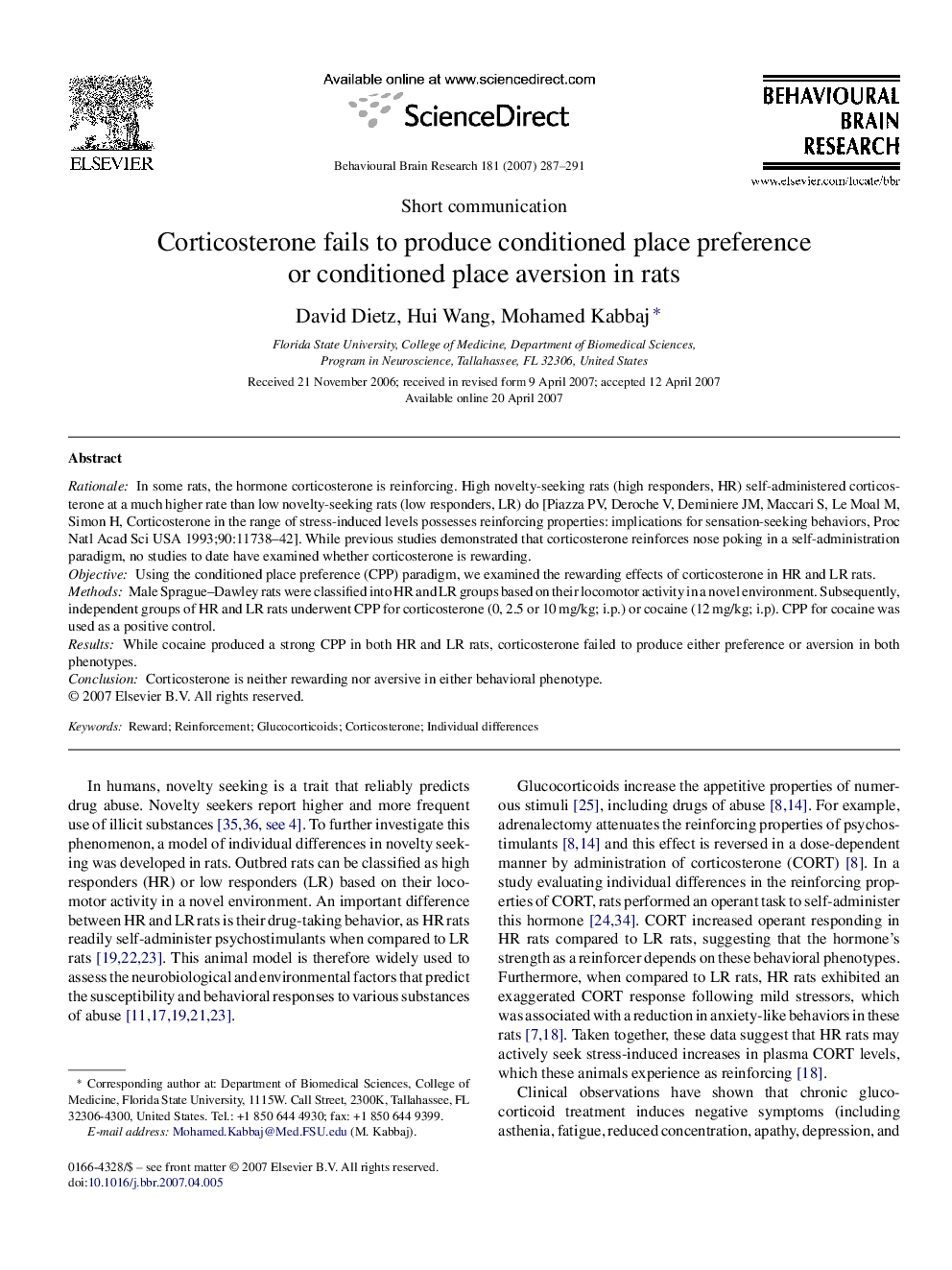| کد مقاله | کد نشریه | سال انتشار | مقاله انگلیسی | نسخه تمام متن |
|---|---|---|---|---|
| 4315615 | 1290087 | 2007 | 5 صفحه PDF | دانلود رایگان |

RationaleIn some rats, the hormone corticosterone is reinforcing. High novelty-seeking rats (high responders, HR) self-administered corticosterone at a much higher rate than low novelty-seeking rats (low responders, LR) do [Piazza PV, Deroche V, Deminiere JM, Maccari S, Le Moal M, Simon H, Corticosterone in the range of stress-induced levels possesses reinforcing properties: implications for sensation-seeking behaviors, Proc Natl Acad Sci USA 1993;90:11738–42]. While previous studies demonstrated that corticosterone reinforces nose poking in a self-administration paradigm, no studies to date have examined whether corticosterone is rewarding.ObjectiveUsing the conditioned place preference (CPP) paradigm, we examined the rewarding effects of corticosterone in HR and LR rats.MethodsMale Sprague–Dawley rats were classified into HR and LR groups based on their locomotor activity in a novel environment. Subsequently, independent groups of HR and LR rats underwent CPP for corticosterone (0, 2.5 or 10 mg/kg; i.p.) or cocaine (12 mg/kg; i.p). CPP for cocaine was used as a positive control.ResultsWhile cocaine produced a strong CPP in both HR and LR rats, corticosterone failed to produce either preference or aversion in both phenotypes.ConclusionCorticosterone is neither rewarding nor aversive in either behavioral phenotype.
Journal: Behavioural Brain Research - Volume 181, Issue 2, 6 August 2007, Pages 287–291